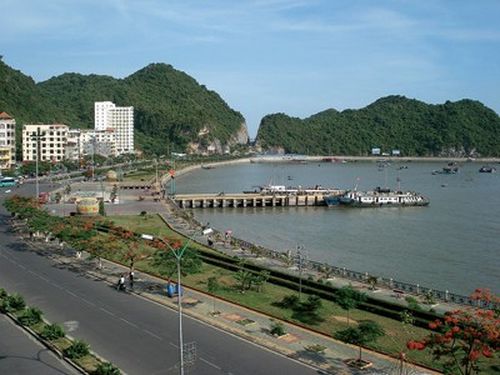A representative from PanNature suggested clearly defining the non-profit status of science and technology organizations to facilitate research, technology transfer, and application. This clarity would also enhance international collaboration and attract funding.

Improving Environment Management in Ha Long Bay, Cat Ba Archipelago
Recently, the International Union for Conservation of Nature organised the second Leadership Committee meeting of the Ha Long – Cat Ba Alliance (HLCBA) in Hai Phong City to discuss improved environment management in Vietnam’s leading tourism attraction. Among the participants were leaders from Quang Ninh and Hai Phong People’s Committees, representatives from the Ministry of Culture, Sports and Tourism, the US Embassy, represented by US Deputy Chief of Mission Susan Sutton, US Agency for International Development (USAID), and Agence Francaise de Development (AFD).

The Leadership Committee meeting discussed the design of certification standards for cruise boats in line with the Global Sustainable Tourism Council and the financial, and policy requirements to put in place a cost-effective collection and treatment system to manage the solid waste and waste water from cruise boats.
With US support, the Ha Long – Cat Ba Alliance was established in 2014 to build a partnership between government, business, and community leaders to catalyze action to preserve and protect Ha Long Bay and Cat Ba Archipelago. In 2015, the Alliance formed a business-led Leadership Committee, which is working to advance a sustainable tourism certification standard for cruise boat companies, and provides technical advice to UNESCO on the management of Ha Long Bay, as well as the proposed addition of the Cat Ba Archipelago to the Ha Long Bay UNESCO World Heritage Site.
The US Government is funding the HLCBA through USAID, which has awarded two grants to IUCN, an International environment organization, and the Centre for Marinelife Conservation and Community Development (MCD), a local Vietnamese NGO. IUCN serves as the Alliance secretariat and catalyzes business investment in environment protection, while MCD focuses on local stakeholder engagement and strengthening the capacity of improved natural resource management, especially in fisheries and aquaculture.
When Ha Long Bay was nominated as a World Heritage Site (WHS) in 1994, IUCN recommended that it include parts of the Cat Ba Archipelago. Both areas share the same coastal and marine ecosystem, making collaborative management crucial. With that in mind, the project, originally called the Ha Long Bay Alliance, has been renamed the Ha Long-Cat Ba Alliance.
The Ha Long Bay World Heritage Site and Cat Ba Archipelago Biosphere Reserve are two of Vietnam’s most economically and ecologically important areas, renowned for their scenic beauty and biological importance. To preserve the natural integrity of these globally significant sites, the Ha Long – Cat Ba Alliance was established to build a partnership between government, business, and community leaders that catalyzes action to preserve and protect Ha Long Bay and the Cat Ba Archipelago. Implementation of the Alliance is divided into two components business engagement and local engagement.
The business engagement component of the Alliance, implemented by the International Union for the Conservation of Nature (IUCN), aims to build the political will for action to preserve the area’s outstanding values by establishing a high-level, business-led Alliance Leadership Committee comprised of business leaders, political representatives from Quang Ninh and Hai Phong, relevant government agencies, and the US Embassy to set a vision and advise on the Alliance work plan. Other aims under this component include increasing public awareness of environmental conditions through media engagement, advancing a certification standard for overnight cruise companies, improving water quality in Ha Long – Cat Ba, and providing technical advice for UNESCO World Heritage site reports.
The second component of the Alliance, implemented by the Centre for Marinelife Conservation and Community Development (MCD), focuses on local stakeholder engagement in Ha Long and assists local residents involved in aquaculture to implement good environmental practices, builds the evidence base for empowerment of local actors for greater participation in environmental protection, and prepares local non-governmental organizations to more deeply engage in environmental issues.
The Alliance is implemented with partner government authorities such as the Quang Ninh Provincial People’s Committee, Ha Long Bay Management Department, Hai Phong City People’s Committee, and Cat Ba Archipelago Biosphere Reserve Management Board, alongside non-governmental partners GreenID, Asian Management Development Institute, Live and Learn, PanNature, and the Centre for Environment and Community Research.



